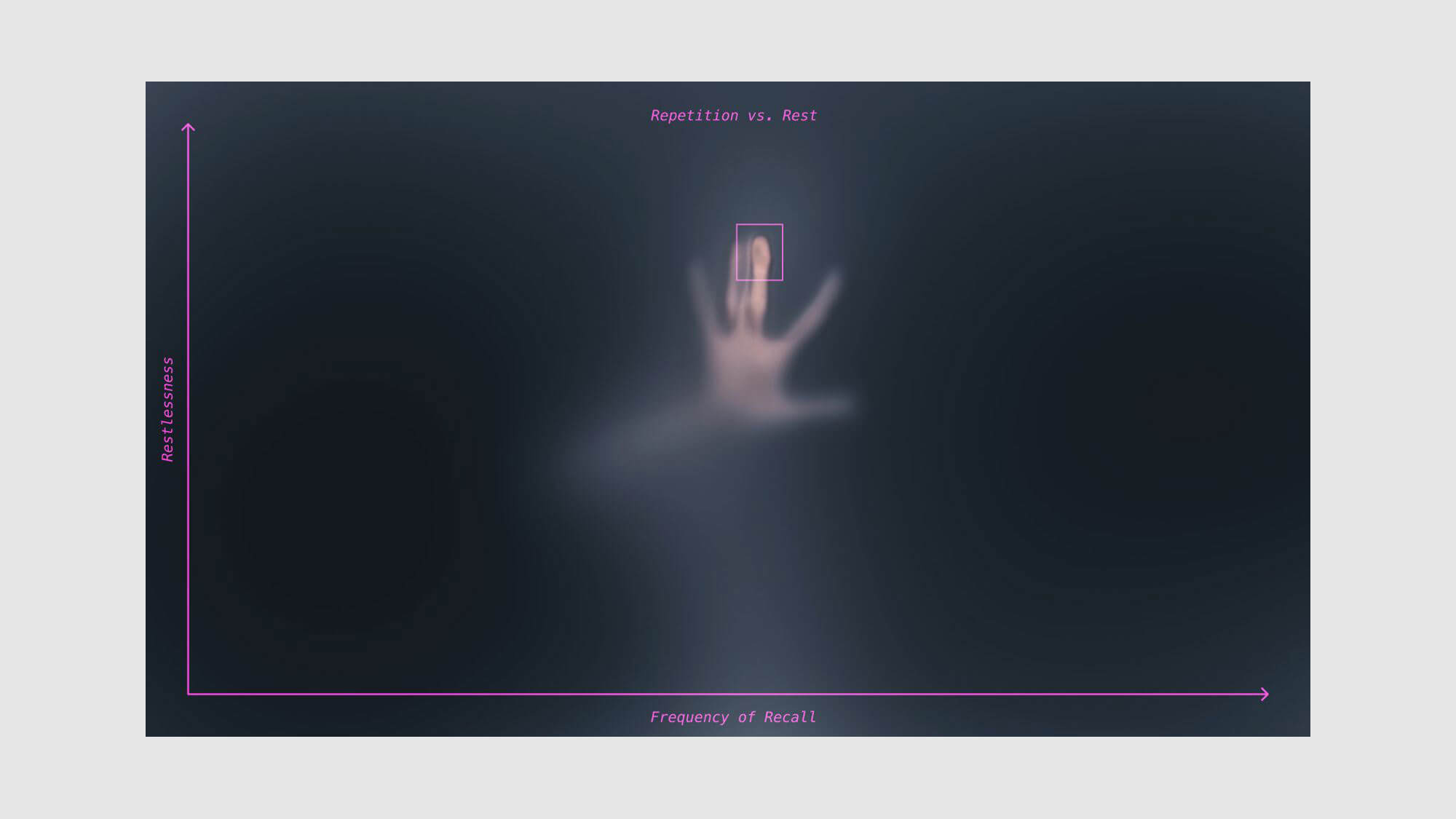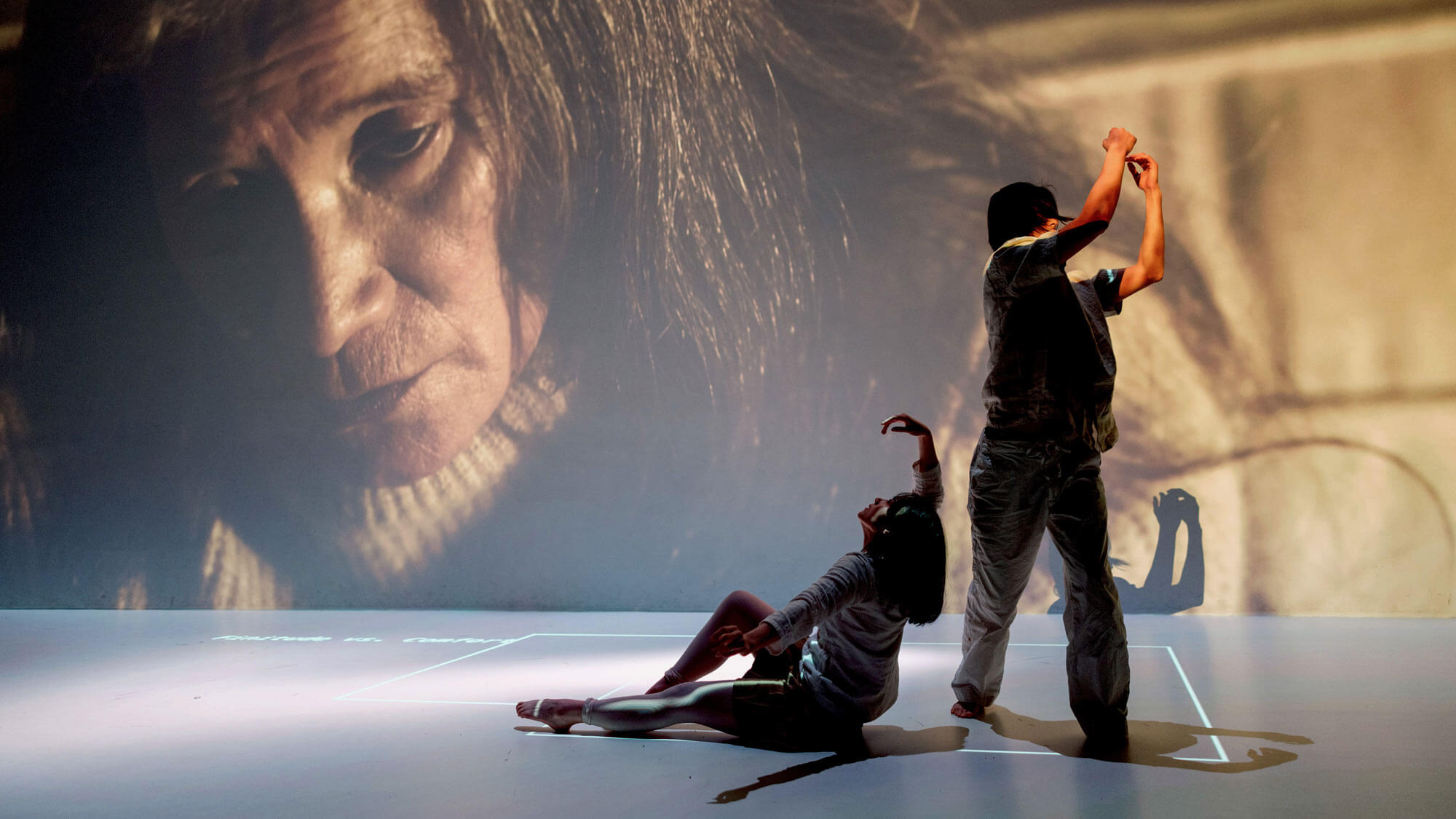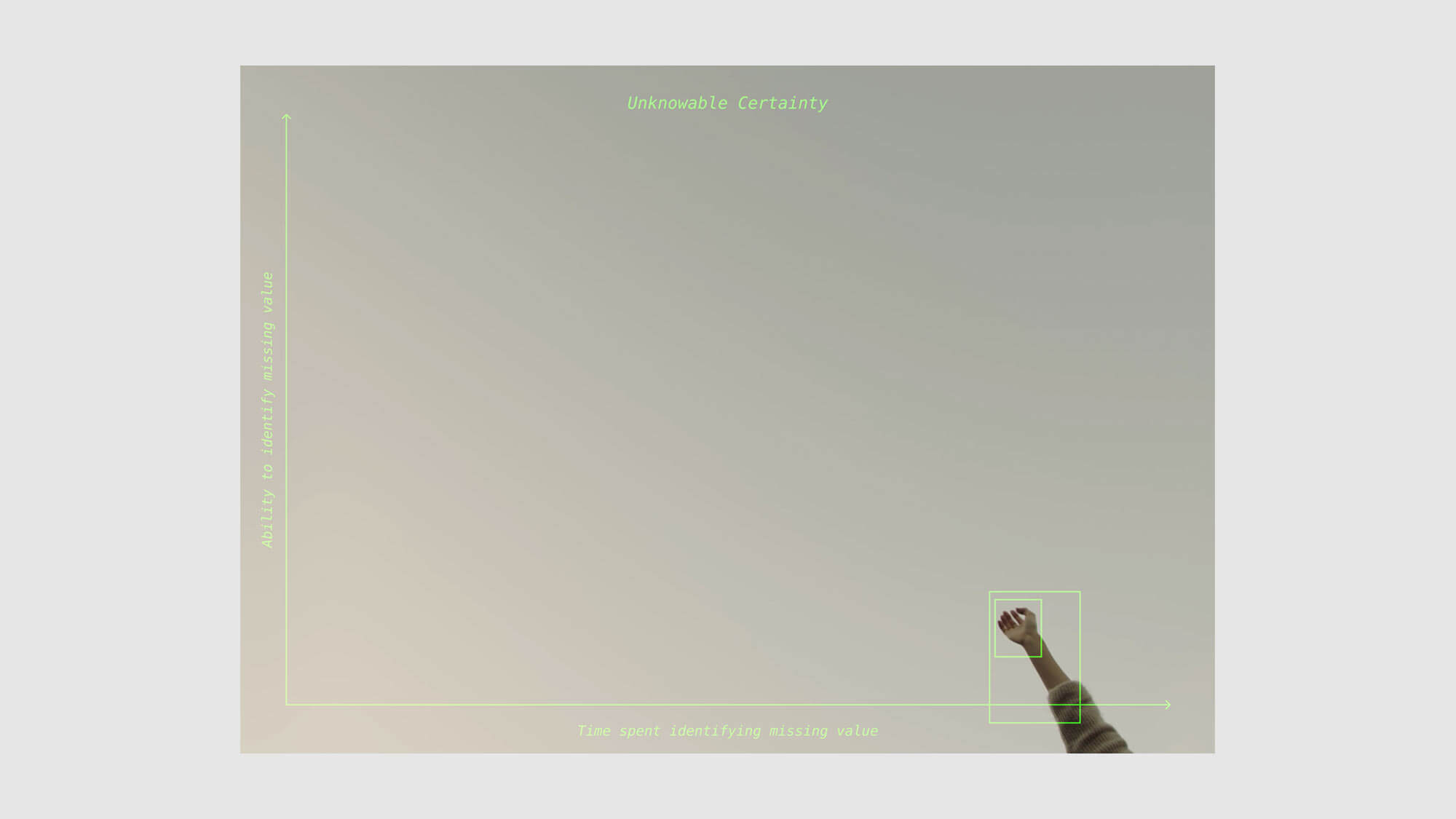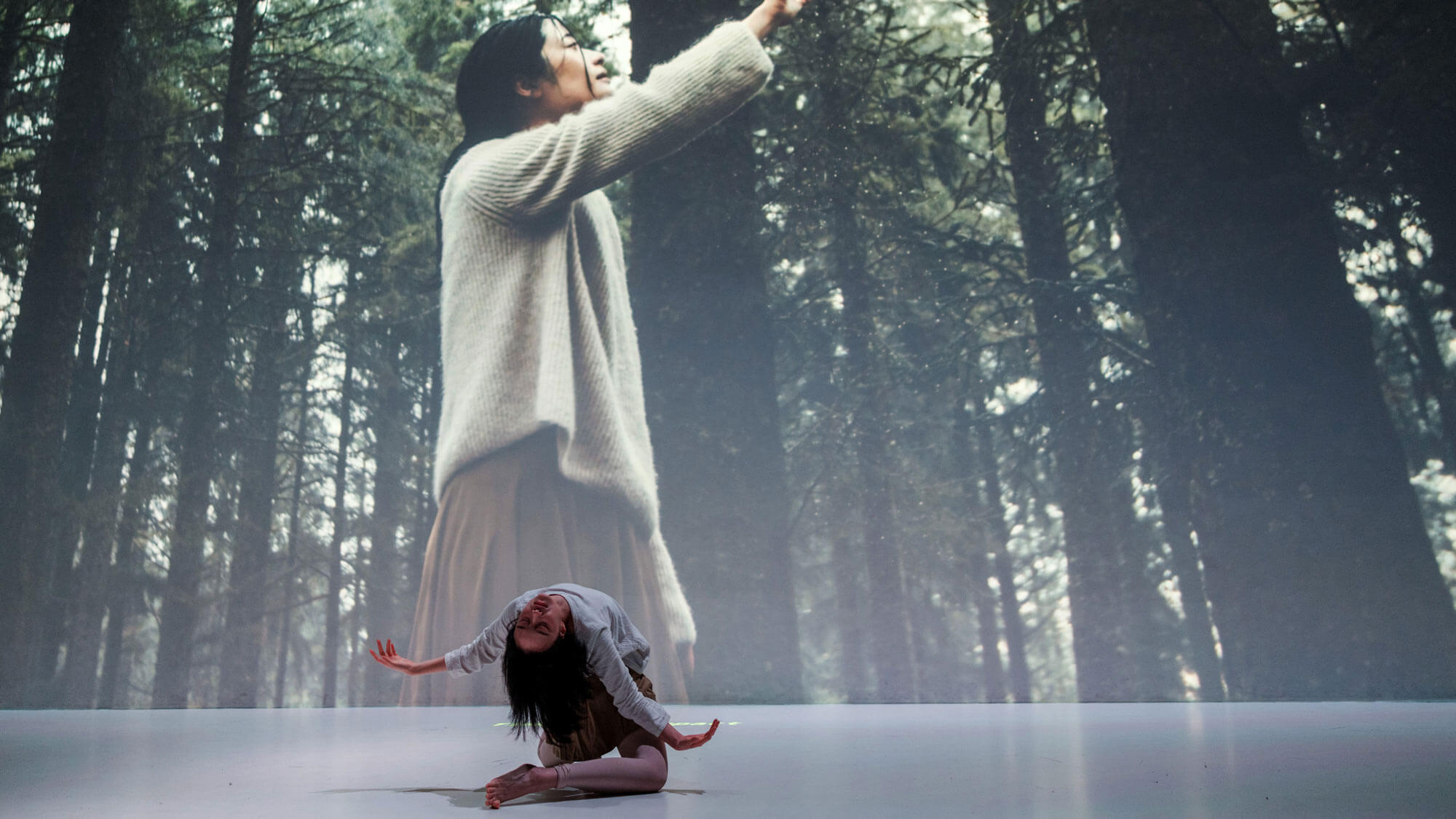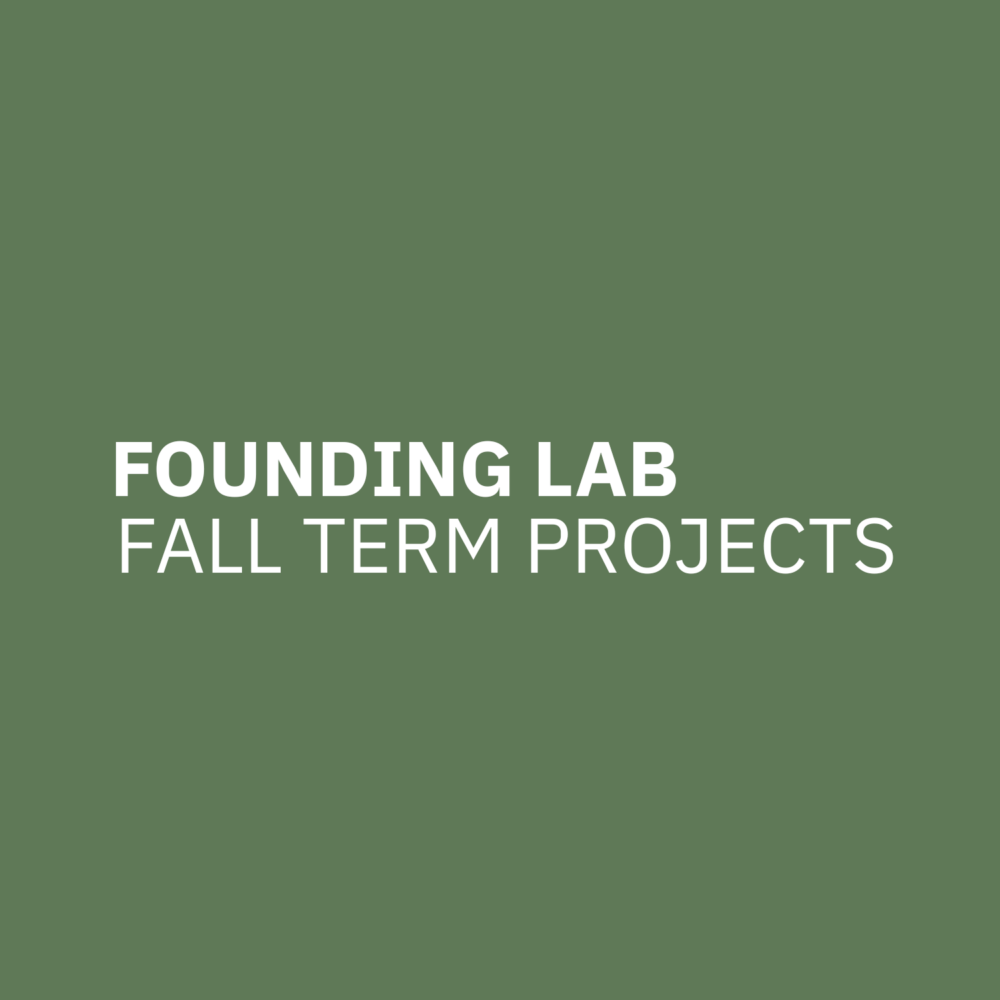
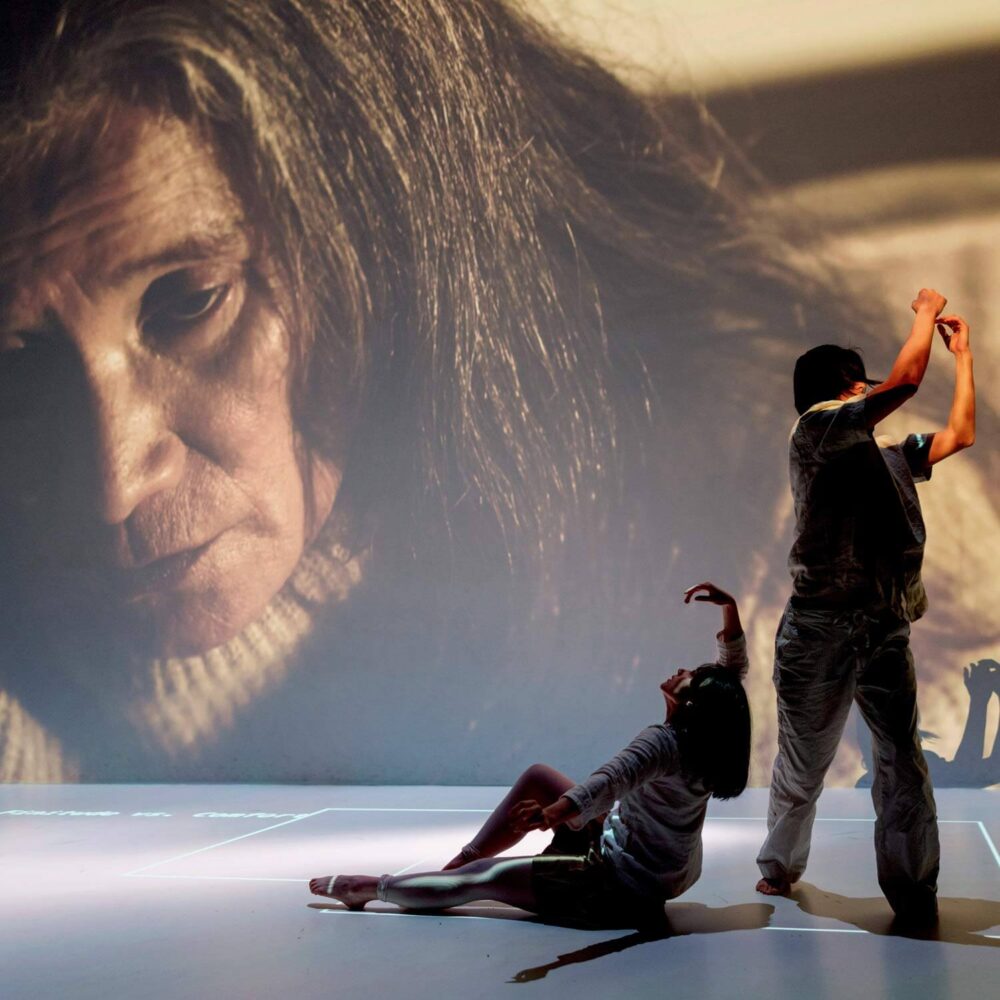
Unknowable Certainty
A Lullaby to Put Myself to Rest
by
Cyan D’Anjou & Luisa do Amaral
In collaboration with Sunghoon Song
Project Reflection by Cyan D’Anjou
In the face of an inevitable end emerges an uncompromising realization: the expansion and weight of the past as the future narrows to an unknowable but certain finite point. To extend time, a cycle of reaching into a database of recollection hopes to yield validation for the cumulative result–the emotional landscape of now. To tell the story of failing to capture the full depth of lived experiences within societally valued frameworks of rationality, Unknowable Certainty is an immersive performance embodying the narrative of aging–as a metaphorical confrontation of a definite ending.
The pieces shows the experience be caught in a search for an unidentifiable variable that would might help quantify the cumulative experiences leading up to the present–as if to balance a scale caused by a debt created somewhere in the past. It portrays the fallacy in the hope that finding this variable would prove that the gravity of feeling has an logical explanation and is thus perfectly solvable. The combined elements of a visual film, live choreography, and the durational depiction of a graphical analysis converge to illustrate the process of breaking from reliving in cycles of past and extend an invitation for sentiment existing beyond understanding.
“I’ve been restless, like I have a debt to settle. But I’m running out of time, so I tried reaching out to you in the places where time feels endless. If I could go back there I could measure and show you; I can prove that I bore the weight of our presence. I was there, amongst the sea, part of something before it ever had an ending.”
I had been accustomed to seeing failure as a balanced opportunity for growth and learning; each loss being reframed as an eventual win. But suddenly, I was met with the uncertainty and unpredictability of feeling, or a feeling of loss that I had not been able to place in an equation that would output a counterfactual gain. I couldn’t move on until I felt I had identified its use, so I employed every systems thinking approach I learned through my design background to thrust myself into an analysis that I trusted would return me with a perfect testable hypothesis for an objectively satisfactory reason behind the implacable sentiment.
It would have been honest of me, in my moment of restlessness, to accept that our lives, experiences, and decisions can never fully fit into a logical framework for my understanding. Nevertheless, they exist. They are the unknowable certainty. Within every seemingly logical computational model is a built-in margin of error accounting for the immeasurable human capacity for unpredictability. The work was born out of a desire to express compassion for my futile search and allow myself an opportunity to be at rest by acknowledging the inherent value of simply being.
The Sketches for Self-Analysis
Process reflection by Cyan D’Anjou and Luisa do Amaral
In his discussion of subversions of rationality, Norwegian philosopher Jon Elster describes the moral and intellectual fallacies that humans are guilty of, when dealing with mental or social states that are “by-products of actions undertaken for other ends” (Elster, 1983). These are states that cannot be brought about intentionally, nor can they be “explained away” easily by connecting the outcomes to specific actions.
The Sketches for Self-Analysis are explorations born out of our mutual experience of eluding the feeling of loss by seeking understanding through rationalisation and finding explanations through analysis. Our projects–addressed in two distinctive formats, an immersive visual performance and an academic paper–both delve into different theories of how the human mind processes and interprets life experiences, from philosophical, sociological, psychological and cognitive perspectives. To the extent that this study investigates the obsessive search for meaning or purpose in uncertainty, it starts from ourselves, who connected through a shared process of grieving and navigating personal crises. We combined our backgrounds and dispositions to craft a framework that would allow us to reinterpret our situations. Our interdisciplinary approaches, characterised by the deliberate convergence and divergence of our inquiries, culminate in the physical representation of a shared reflective process–a candid exposition of self-analysis.
Our exhibition space includes a cartography of the theoretical journey of developing the philosophical framework for our project, and how it intertwines with our life events and emotional processes. It demonstrates how our intellectual investigations reflected or affected our insight into personal thoughts and feelings. Particularly relevant are the different ways that the desire for self-validation was revealed through our choices of literature and line of inquiry, eventually coalescing into an aggregated framework that channelled our best skills in the service of the task we were set to accomplish.
In a sociological sense, we started out with theories that explained social action by rationalising actors into mathematical models. Reading agency and social exchanges as economic transactions seems very natural to the neoliberal subject, but it is insufficient at accounting for the complexity of social reality, and all the omitted factors that go unobserved and might so easily skew our models.
As we developed both our conceptual understanding and the artistic execution thereof concurrently, the endeavour to translate the scale of our research into a tangible artistic output initially posed a daunting challenge. Searching for personal clarity within our work meant that the expressive elements of the cyclical rationalisation we were investigating such as desire, fear, and restlessness were all our own. In order to find the comfort and compassion we hoped to convey in the piece, it was imperative for the artistic narrative to tell a story beyond our own. That moment of clarity arrived in the vulnerability of giving the project space to exist with others. We invited new collaborators who contributed their own approaches to honouring sentiment amongst reason, allowing for the final account to speak from a collective perspective.
The work originated as an attempt to bring about comfort as a by-product. However, our extensive intellectual exploration, the time and change that was brought about in poring over this topic, the experience of bringing in other people who resonated with the work, might have just given us the tools to reframe our perception of our personal experiences.
